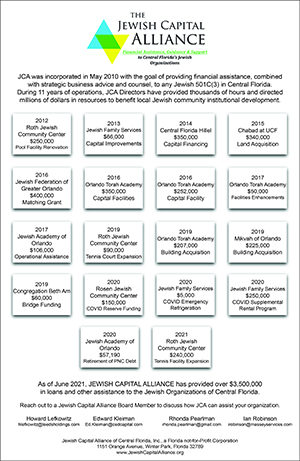On the borders of the Third World
Commentators have long noted that Israel is a western outpost in the Muslim Middle East, and suffers accordingly.
This note accepts such a designation, but begins with a slightly different perspective, and seeks to learn what is relevant for the here and now.
The Middle East is not only Muslim, or nearly entirely Muslim. It is also the Third World.
This designation has its social, economic, and political elements, irrespective of religion. Traits of Mexico are similar to those of Palestinian areas of the West Bank, Gaza, and just about everything else from Morocco through to Afghanistan, with the sole exception of Israel.
Most prominent is widespread poverty, limited opportunities for education and other public services, nothing like the democracy that prevails in the better parts of the world, and cultural traits best summarized as traditional, or conservative. There is a limited role in public affairs for women, strong family control centered in elder males, limited tolerance for personal equality, civil rights, an acceptance of homosexuality, or political expressions that challenge the conventional.
Israel is a mirror image on just about all those features, especially in the 80 percent of the population that is Jewish. There are elements of poverty, low education, traditional family structures, and intolerance of diversity in Jewish towns and neighborhoods, especially among the ultra-Orthodox, recent immigrants from Ethiopia, and towns distant from the center with a high concentration of Middle Eastern Jews who did not make it over the course of three generations to better opportunities. Generally, the country is one of the world’s wealthiest, best educated, most advanced technologically, most competitive politically, most open to self-criticism, and tolerant of individuals who vary from the norm in their personal beliefs or behaviors.
Some of these “modern” traits appear among the Arabs of Israel, but not to the same extent as among Jews. Borders of the Third World surround Arab neighborhoods in largely Jewish cities, towns and cities that are largely Arab, as well as the Palestinian areas of the West Bank and Gaza.
Add to that competing national identities, with that of the Arabs beefed up by Islam and the interests of Third World Muslim governments with restive populations always on edge, and we’re a long way toward understanding the lack of formal accords between Israel and its neighbors, and the protests heard from Israeli Arab politicians.
The borders of ultra-Orthodox communities present a slightly different cluster. No one can claim that the Haredi population is uneducated, but its schooling largely or entirely (depending on congregation) avoids secular topics that could contribute to mutual understanding with Jewish neighbors, and preparation for a productive life. The neighborhoods and towns where the vast majority of ultra-Orthodox live are geographically distinct, largely homogeneous, and often unfriendly to non-Haredi visitors. There is not significantly greater awareness of the “other” between ultra-Orthodox and other Israeli Jews any more than between Israeli Jews and Arabs. While it was only one ultra-Orthodox extremist who took a knife to Jews demonstrating in favor of gays, the condemnation of homosexuals and lesbians from ultra-Orthodox sources has been considerable, even after the death of a teenage girl.
Due to the sensitivity in dealing with a community that asserts its greater Judaic purity, as well as the significant weight of ultra-Orthodox political parties (always part of the government coalition or likely members in the next coalition), the Israeli establishment seems less certain in dealing with this group of “others” than with Israeli Arabs or Palestinians. The record at defending Jews against Arab terror is better than persuading the ultra-Orthodox to educate their children for anything other than the continued study of sacred texts, accept family planning, and move them into occupations that will allow them to support themselves and pay taxes.
We hear about the Israelization of Arabs. Mostly that means the Arabs of the Galilee, Haifa, and Jaffa, and less so those of Jerusalem. The differences come from more or less schooling in Hebrew and integration in Israeli higher education. Here in French Hill, however, a short walk from Isaweea, I encounter Arab men sitting in coffee houses alongside Jews, and reading Israel Hayom. You might tell Sheldon Adelson that he is making a difference, but I’m not sure.
No less prominent are the shrill sounds of Muslim activists claiming that the Jews intend to destroy al Aqsa, nearly daily efforts to assault civilians or throw stones at soldiers and police, and occasional reports of honor killings, i.e., the murder or older women thought to stray from their husbands, or young girls who show signs of responding to the overtures of a young man from a family not on Dad’s list of the acceptable.
The TV series “The Bridge” portrays as well as anything outside of professional writing, the differences between the First and Third Worlds. Its stories straddle El Paso and areas over the border. It shows how Mexico has unraveled in recent years, due in large part to warfare among those competing to serve the U.S. market for illicit drugs, or to funnel Mexicans and Central Americans into the U.S.
Crime and corruption differ in expected directions between Jewish, Israeli Arab, and Palestinian jurisdictions. With a President convicted of rape and a Prime Minister having several convictions for corruption under appeal, Israel cannot claim too much by way of governmental purity. Prominent in the Arab sector, however, are a pervasive role for family connections in local government. The West Bank Palestinian leadership is serving more than six years beyond the expiration of its term, Gazan rulers punish their opponents via street side trials and executions. Crimes of violence as well as traffic deaths are more frequent in Arab than in the Jewish sectors of Israel.
One can do a similar analysis of the U.S. and Western Europe. Illegal immigrants would provide one insight into Third World economics and culture close the First World. African Americans, Native Americans, and the Muslim neighborhoods of Europe show their own variations from an overarching similarity. Concepts of “integration” are limited here and there, with each of the “others” having their impact on how we live, and what areas we choose to avoid.
Ira Sharkansky is a professor (Emeritus) of the Department of Political Science, Hebrew University of Jerusalem.







Reader Comments(0)